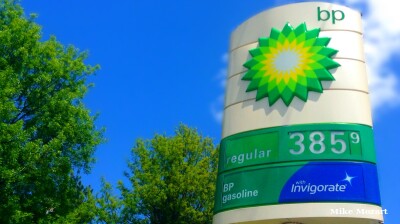The European Commission has unveiled a list of 13 strategic projects in countries outside the European Union aimed at securing critical raw materials and supporting economic development in partner countries, as the bloc strives to reduce dependency on a handful of global suppliers.
The move was taken under the Critical Raw Materials Act, which entered into force in May 2024, and follows the March 2025 selection of 47 strategic projects within the EU. Together, the 60 projects are intended to strengthen supply chains vital for sectors such as clean energy, electric mobility, defence and aerospace.
"Europe needs raw materials to succeed in our industrial and climate ambitions," said European Commission Executive Vice-President for Prosperity and Industrial Strategy Stéphane Séjourné. “Today’s list of 13 strategic projects across the world will help to reduce Europe’s dependencies, contribute to our economic security while creating growth, jobs and export opportunities in the countries concerned.”
The projects span four continents and include initiatives in Brazil, Canada, Kazakhstan, Ukraine, Zambia and elsewhere. Ten of the selected projects focus on raw materials critical for electric vehicle batteries — such as lithium, nickel, cobalt, manganese and graphite — while others involve the extraction of rare earth elements, copper, tungsten and boron.
The EU estimates that the 13 projects, which require a total capital investment of around €5.5bn, will boost supply security for materials such as lithium, cobalt, nickel, manganese, graphite and rare earth elements—key ingredients in electric vehicle batteries, wind turbines and defence technologies.
The projects include major developments in resource-rich emerging markets. In Ukraine, a graphite mining and processing facility at the Balakhivka deposit is being developed by Pobuzhzhya’s Development LLC. The project will also produce spherical graphite for lithium-ion batteries, positioning Ukraine as a key supplier to Europe’s battery manufacturing sector.
The Sarytogan graphite site, located in Kazakhstan’s Karaganda region, is considered among the world’s largest untapped graphite resources, with the potential to become a major supplier both regionally and internationally. The project is being developed by Sarytogan Graphite Limited, a company listed on the Australian Securities Exchange.
Serbia’s Jadar lithium project, led by Rio Tinto, has also been included despite ongoing environmental protests and public opposition. The project, which has drawn strong interest from the EU and Germany, is viewed in Brussels as central to securing lithium supplies critical to Europe’s energy transition. Serbia has become a flashpoint in the global scramble for lithium, with residents in the Jadar Valley and environmental organisations warning of ecological risks and calling for greater transparency.
In Zambia, Kobaloni Energy is planning Africa’s first cobalt sulphate refinery to deliver traceable, battery-grade cobalt to electric vehicle makers. Meanwhile, Australia’s Evion Group is developing the Maniry graphite mine in Madagascar, with an open-pit operation that could supply significant quantities of graphite from East Africa.
Elsewhere, Mkango Resources is advancing the Songwe Hill rare earths project in Malawi. The Canadian firm’s mine, located on the slopes of a steep hill, contains extensive zones of rare earth mineralisation and is expected to play a vital role in the EU’s plans to increase rare earth production. In South Africa, Frontier Rare Earths plans to develop the Zandkopsdrift site, which holds enough mineral reserves to support production for over four decades, including 17,000 tonnes of rare earths and 100,000 tonnes of battery-grade manganese sulphate per year.
Latin America is also featured in the EU’s strategic outreach. In Brazil, Jervois Global is restarting its São Miguel Paulista nickel and cobalt refinery in São Paulo. Originally built in 1981, the facility was mothballed in 2016 but is now being modernised to meet rising demand for clean energy technologies.
Projects in Canada and Greenland have also been selected, including the Dumont integrated nickel project in Quebec and Greenland’s graphite and rare earth developments. In Norway, the Nussir ASA copper project has been recognised for its potential to contribute to Europe's decarbonisation goals. The United Kingdom, though no longer an EU member, is also represented with the inclusion of Tungsten West’s project at the Hemerdon Mine in Devon.
“Securing reliable supplies of critical raw materials is a strategic priority for Europe’s resilience and competitiveness,” said European Commissioner for International Partnerships Jozef Síkela. “The EU offer is to link cooperation in this area with skills, quality jobs, access to clean energy and essential services, and with good practices and high standards. This is what the Global Gateway is about, and our projects prove it in action.”
The Commission said that the selected projects will benefit from targeted support, including help accessing financing and forging links with potential off-takers. Each initiative was vetted by the Commission with input from external experts, the Critical Raw Materials Board — comprising representatives from EU member states — and the European Parliament, which acted as an observer. The projects were assessed on their strategic importance, technical feasibility, and adherence to environmental and social standards.
The June 4 announcement follows the March 2025 designation of 47 strategic projects within the EU. The full list of 60 projects — 47 domestic and 13 international — represents the EU’s first coordinated attempt to create resilient and sustainable raw materials supply chains under the Critical Raw Materials Act. The initiative reflects growing concern in Brussels over the concentration of raw materials supply, particularly from China, and is part of a broader industrial strategy to ensure the EU can meet its climate and technology targets.
News

US imposes travel restrictions on personnel in Zambia’s Copperbelt over toxic spill
The US government has imposed travel restrictions and reassigned personnel in parts of Zambia’s Copperbelt Province following a toxic spill from the Sino Metals Leach Mine.

Thousands protest in Kosovo against The Hague-based war crimes court
Protest reflects rising frustration among segments of Kosovo society over the perception that the Specialist Chambers is biased and lacks legitimacy.

Slovenia bans imports from Israeli settlements in occupied Palestinian territories
Ban needed in response to humanitarian catastrophe in Gaza, says Slovenian Foreign Minister Tanja Fajon, one of the most vocal EU critics of Israel’s actions in Palestine.

Trump to host leaders of Azerbaijan and Armenia as they close in on strategic transit deal
Landmark summit is expected to yield a joint peace framework and the launch of a major US-led infrastructure project across the South Caucasus.




